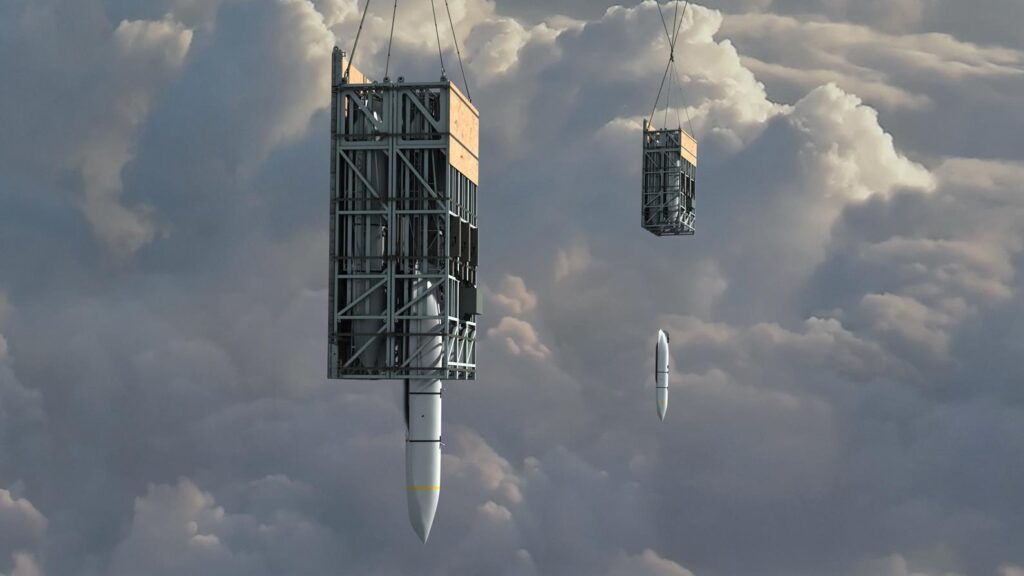The U.S. Air Force is practising with an MC-130J cargo aircraft in a first to destroy a surface target with a cruise missile. MC-130J Commando II of the U.S. A.F. dropped a cargo simulating a pallet with AGM-158B Joint Air-to-Surface Standoff Missile-Extended Range (JASSM-ER) stealth cruise missiles.
The Rapid Dragon system tests took place at the beginning of this year, but their details appeared only in June.
This project is very profitable for the Pentagon as the U.S. Air Force has more than half a thousand C-130 and C-17s that can be thrown into battle after minor modifications. These aircraft can carry dozens of missiles and munitions on board. And capacious fuel tanks allow them to stay in the air for a very long time.
The test
During tests, a special pallet with ammunition was loaded into the cargo hold of the converted MC-130J. When the aircraft reached the desired height and entered the launch area, the container was thrown off the ramp. The cruise missile separated, turned on the engines, performed a manoeuvre and rushed towards the target. The USAF especially noted that the ammunition received the flight mission while in the flight.
During the exercise, the transport crew received the coordinates for the pallet drop point, after which a new target was identified for the strike that required the re-targeting of the missiles.
The Rapid Dragon concept involves using aircraft as a truckload of weapons to provide additional strike power, especially during potential higher-class operations against competitors.

As per the planners in Pentagon, the program will help in a potential war with China. The U.S. planners tested armed military transport aircraft in a computer simulation of the battle for Taiwan.
AGM-158B
The AGM-158B, Joint Air-to-Surface Standoff Missile-Extended Range, JASSM-ER has an estimated flight range of 925 kilometres. This missile can be launched from beyond the range of Russian and Chinese air defence radars like S-400 and the HQ-9.
The Indian Air force tactics
The An-12 transport aircraft was used as a bomber by the Indian Air Force against Pakistan. In 1971, the crews of the 44th wing of the Indian Air Force, whose An-12s were equipped with bombs during the war with Pakistan, attacked airfields, weapons depots and fuel and lubricants storage facilities. The mass of the combat load was 16 tons.
After sharpening their bombing skills and modifying the delivery platform with a cradle for every 225-kilogram bomb, the squadron flew to Bareilly to the Central Air Command a few days before the outbreak of the war. With a maximum bomb load of 40 such bombs, the mission with six aircraft delivered quite a lot of TNT. The Indian Air Force bombing force was concentrated between Bareilly, Agra and Gorakhpur to ease pressure on Western Air Command, allowing planners to centrally coordinate all bombing from one headquarters.
The first-night bombings of the Changa-Manga forest were carried out on the night of December 3 to 4, 1971. According to intelligence reports, there were large ammunition depots and a large concentration of troops in the area. The sky lit up by explosions while bombing from low altitudes, and that Pakistani radio and Pakistani newspapers reported on the raid and its aftermath the next day. In the next two weeks, the squadron flew about 45 sorties against various targets, including the Pakistani artillery brigade at the Haji Pir Pass, which was interfering with Indian operations, the division headquarters at Fort Abbas, the Sulaimanke Bridge, Sindh’s Hyderabad railway station, the Sui gas plant, and a daring daytime raid on the Skarduir field with the participation of Canberra bombers on the last day of the conflict.
The quality of the An-12 squadron’s flights over mountainous terrain prompted the Central Air Command to appoint the leader of the 44th wing to lead the formation of Canberras. On December 13, the squadron was tasked with striking a large ammunition depot near Dhaka.
No An-12 was lost during these raids due to teamwork. The planes were subjected to ground fire and once a Pakistani Mirage-3, which latched onto an An-12 and was probably seconds from the missile launch. Indian Air Force operators saw this on the radar screen and shouted to the An-12 pilot through the open channel to lower the flight altitude to the level of the treetops. This warning saved the plane and the crew.
During an afternoon raid on the Sui gas plant, the planes flew from Bareilly to Jodhpur, refuelled there, and then flew at an altitude of 100 meters and descended to an altitude of 30 meters about 240 kilometres from the border. Once on the target, at a speed of just over 500 km / h, the planes climbed 100 meters, dropped bombs and returned 30 meters until they entered Indian territory. For the Haji Pir night mission, the planes flew directly from Bareilly to Srinagar at an altitude of 6 kilometres and descended to an altitude of 1800 meters above the Srinagar airfield. Then the aircrafts headed to the Punch airfield and further to Haji Pir, returning by the same route after the bombing of a Pakistani brigade.
Unlike the UAAF application with the AGM-158B, the An-12 pilots were responsible for precise navigation to targets, situational awareness and evasive actions that needed to be taken to avoid ground fire or aerial threats. The navigator assisted the pilots in navigation and also used an impromptu weapon sight to select the right moment to drop the bombs, in front of which the rear hatch opened – after which the tail gunner and the flight signaller came into action, they first turned on the fuses. and then helping the cradles to slide out of the rear doors, while the pilots pitch and accelerate the plane so that the bombs would drop by gravity. The 44th squadron was the first transport squadron to receive combat awards from the President of India.
